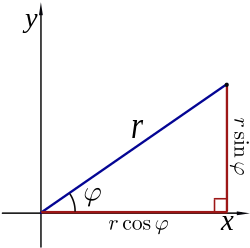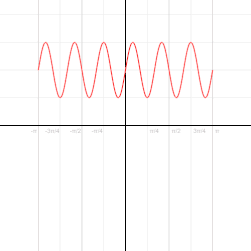ध्रुवीय निर्देशांक पद्धति

गणित में ध्रुवीय निर्देशांक पद्धति (polar coordinate system) द्विविमीय-निर्देशांक पद्धति है जिसमें किसी बिन्दु के निर्देशांक उस बिन्दु की किसी सन्दर्भ बिन्दु से दूरी एवं सन्दर्भ दिशा से बनने वाले कोण द्वारा दी जाती है।
ध्रुवीय एवं कार्तीय निरेशांकों में परस्पर परिवर्तन


The polar coordinates r and ϕ can be converted to the Cartesian coordinates x and y by using the trigonometric functions sine and cosine:
The Cartesian coordinates x and y can be converted to polar coordinates r and ϕ with r ≥ 0 and ϕ in the interval (−π, π] by:[1]
- (as in the Pythagorean theorem or the Euclidean norm), and
- ,
where atan2 is a common variation on the arctangent function defined as
The value of ϕ above is the principal value of the complex number function arg applied to x+iy. An angle in the range [0, 2π) may be obtained by adding 2π to the value in case it is negative.
सन्दर्भ
- ↑ Torrence, Bruce Follett; Eve Torrence (1999). The Student's Introduction to Mathematica. Cambridge University Press. आई॰ऍस॰बी॰ऍन॰ 0-521-59461-8.






